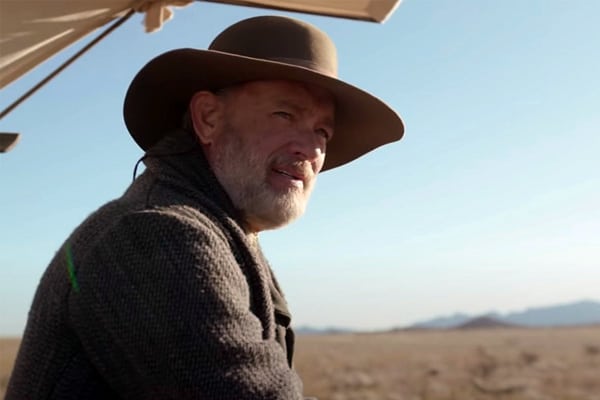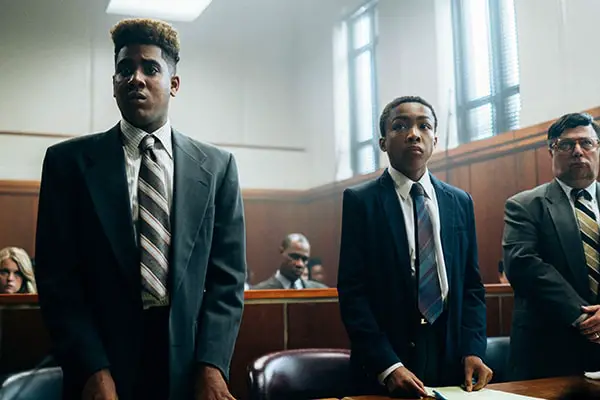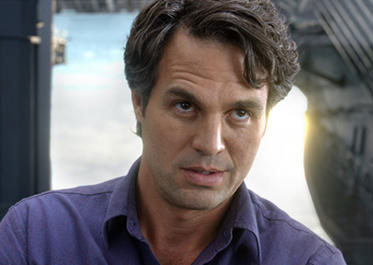
“I never feel as though I know what I’m doing on a movie until day three of shooting. I wander around in a confused stupor, saying, ‘Is this any good?’ So, in order to get there, you just have to have some brand of foolhardy faith in your abilities…” – Tom Hanks
It’s hard to believe but after all these years as a movie star, Academy Award winner Tom Hanks had never been in a Western until 2020’s News of the World. Sure, as Sheriff Woody he has played a cowboy before, but that is an animated toy cowboy in a world very different from News of the World, in which Hanks plays Captain Kidd, a former Confederate soldier who is tasked with returning an orphaned girl who has been kidnapped by Native Americans to her remaining family. In an interview with Collider, Hanks elaborates on why he feels his roles do not necessarily inform each other and how backstory can get in the way of the “present” of a film’s narrative.
When the interviewer asks if Captain Kidd has anything in common with Sheriff Woody, Hanks begins his answer by talking about his lengthy association with the Toy Story series, but then points out that living with one character over a period of twenty five years does not mean that it translates to other characters an actor will play. He explains:
“I don’t know if there’s a lot of people movies that have the same people involved. You know, from 25 years ago the great thing is, is that you know, animated toys don’t age. So you don’t see them slowing down or or or or you know getting older.
But there you know the I… I guess there’s a way of looking at it. I don’t know if anybody can truly grasp this, but in fact no movie translates to the next movie you’re making. You start all over from scratch. Now, granted, you know how things work, you know how a set works, you know about basecamp and you know about the difference between shooting on film and you learn technique, you learn the technical aspects of making movies. But the movie that you made last year or five years ago or 25 years ago does not impact the emotional journey that you’re on. You start all over again from scratch. And that’s why so many actors are stark raving nuts. It’s because they are always thrown up onto this this high wire without a net.
And you if you make a mistake… if you don’t get there, let me put it that way… If you as an artist in a creative entity, an interpreter of somebody else’s words, if you don’t get there where you need to be, you will not get there for the rest of time, because the movie is locked.
I never feel as though I know what I’m doing on a movie until day three of shooting. I wander around in a confused stupor, saying, ‘Is this any good? Is this right? Does this make any sense? Have we started this right? Are you actually going to use what we shot yesterday, ’cause I don’t think I had it.’ So, in order to get there, you just have to have some brand of foolhardy faith in your abilities and also trust in everybody else that’s there to help you pull along.”
When it comes to portraying a character’s backstory in a film to explain a character’s personality or motivations, Hanks is firmly in the “less is more” camp. He says, “I rail against backstory in a lot of in a lot of films because I think it can be reduced to just kind of like a cinematic tool, as opposed to an intrinsic part of the narrative. And you must never shortchange the narrative, and if you gotta make it a little harder, then make it a little harder for crying out aloud. Why take shortcuts?”
For example, Hanks shares what director/co-screenwriter Paul Greengrass told him about his character: “So, Paul saying, you know, ‘He’s haunted. He’s home. There’s a burden. It’s hard to continue along. It’s hard.’ And as an actor, I say, ‘Got it. Understood. Yeah, hard. Backstory. Got it. I understand that but how does it play out? How does it play out right now? How does it play out in the present of the motion picture?’ And there was, you know, silence and there’s pondering and people asking questions about it and he talks about it. And I was… whether I told the boss about this or not, I was not playing that. I was instead playing this question: What do I do tomorrow? That’s it. I mean, how do I keep going tomorrow?”
To illustrate that further, Hanks points to what was written about his character in the original novel the film was based on versus what ended up in Greengrass’ script. He continues, “[News of the World novelist Paulette Jiles] put together this really beautiful texture that was complemented by Paul’s concentrating on his time during the war and the loss of his wife. And I as an actor say, ‘Yeah, great. Got it. Understood. My problem here as Captain Jefferson Kyle Kidd is: How do I get on the horse and do it again tomorrow?’ That’s what I’m playing.”



